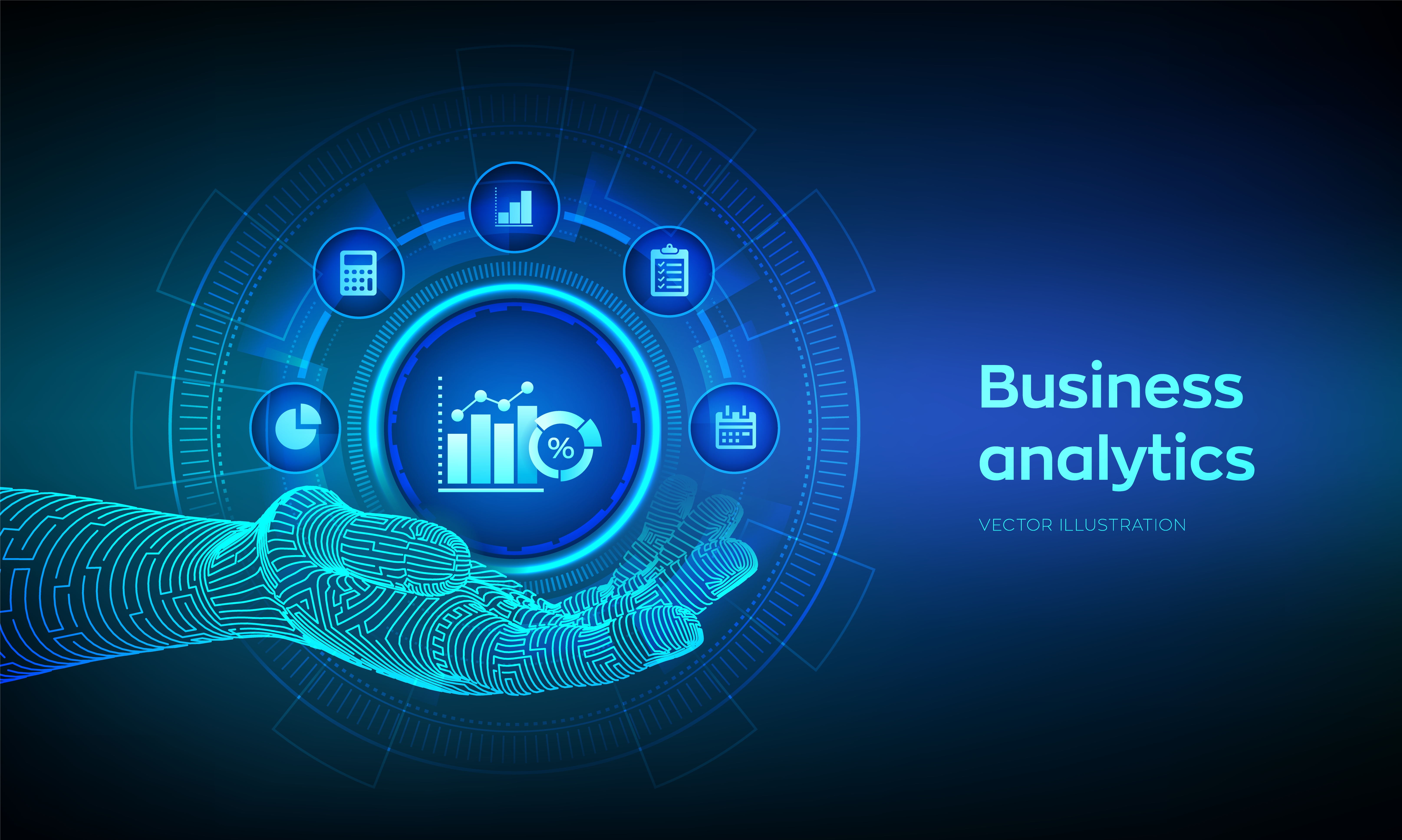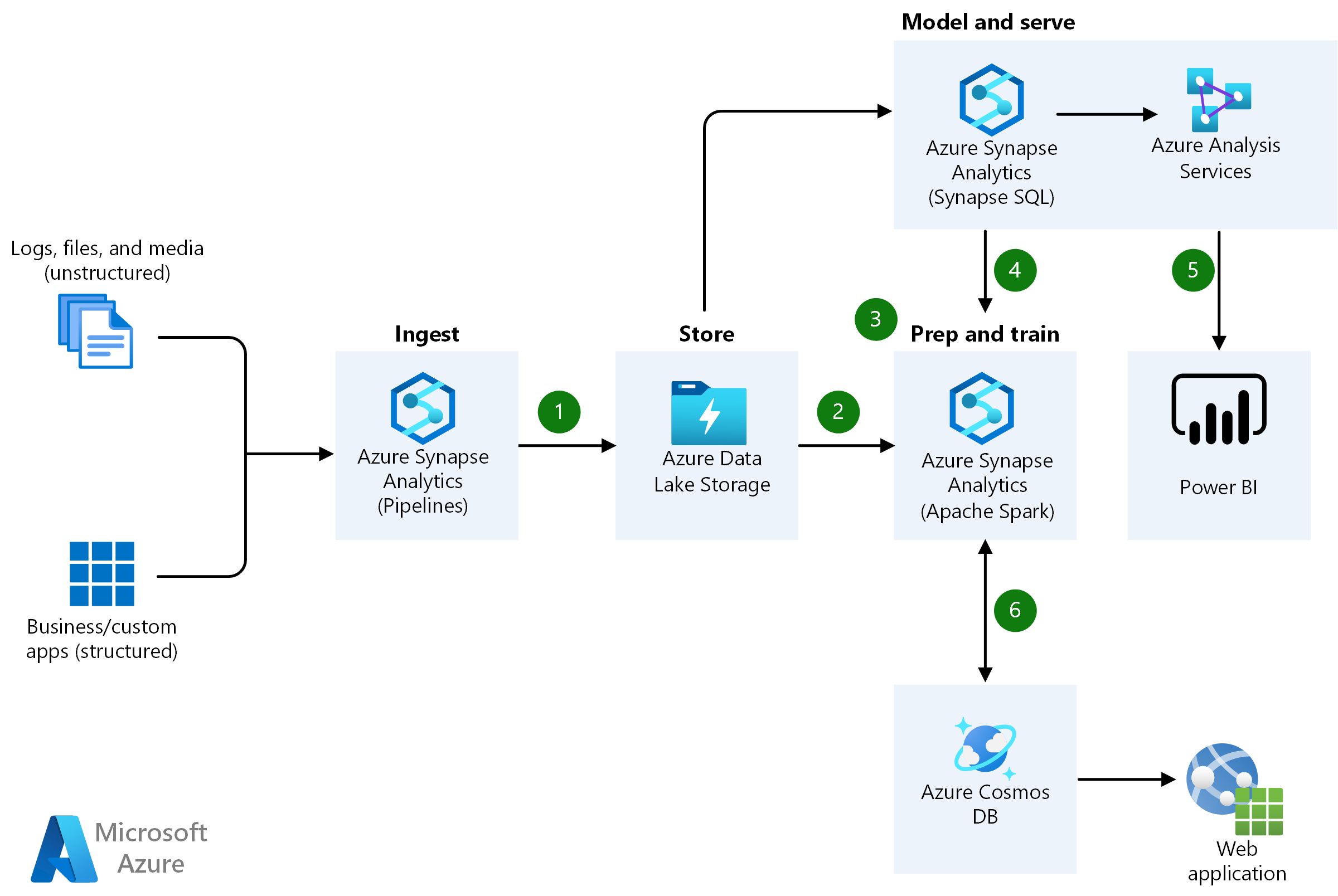Advanced Business Analysis (ABA) emerges as a transformative force, revolutionizing the way businesses leverage data to make informed decisions. This cutting-edge approach empowers organizations to harness the power of data science, technology, and innovative methodologies to gain actionable insights and drive success.
ABA encompasses a wide range of techniques, from predictive modeling and statistical analysis to machine learning and data visualization. By delving into structured, unstructured, and big data, ABA provides businesses with a comprehensive understanding of their operations, customers, and market trends.
Definition of Advanced Business Analysis

Advanced business analysis goes beyond traditional methods, leveraging data science and technology to extract deeper insights and make more accurate predictions. It empowers businesses to make data-driven decisions, optimize processes, and gain a competitive edge.
Key principles and concepts of advanced business analysis include:
- Data-centric approach: Focuses on collecting, analyzing, and interpreting data to uncover patterns and trends.
- Use of data science and technology: Employs statistical modeling, machine learning, and artificial intelligence to analyze large and complex datasets.
- Predictive analytics: Uses historical data to forecast future outcomes and identify potential opportunities and risks.
- Optimization techniques: Leverages mathematical and statistical models to find the best possible solutions to business problems.
Role of Data Science and Technology in Advanced Business Analysis
Data science and technology play a pivotal role in advanced business analysis, enabling businesses to:
- Handle and analyze large and complex datasets (big data) that traditional methods cannot handle.
- Automate data analysis processes, saving time and reducing errors.
- Develop predictive models that provide insights into future trends and customer behavior.
- Use machine learning algorithms to identify patterns and anomalies in data.
Methodologies and Techniques Used in Advanced Business Analysis
Advanced business analysis employs various methodologies and techniques, including:
- Predictive modeling: Uses statistical and machine learning techniques to forecast future events or outcomes.
- Statistical analysis: Applies statistical methods to analyze data, identify trends, and test hypotheses.
- Machine learning: Trains algorithms to learn from data and make predictions or recommendations.
- Optimization techniques: Uses mathematical models to find the best possible solutions to business problems.
Types of Data Used in Advanced Business Analysis
Advanced business analysis utilizes various types of data, including:
- Structured data: Data organized in a predefined format, such as spreadsheets or databases.
- Unstructured data: Data that does not conform to a predefined format, such as text, images, or videos.
- Big data: Massive datasets that are difficult to process using traditional methods.
Importance of Data Visualization and Communication in Advanced Business Analysis
Data visualization and communication are crucial in advanced business analysis as they:
- Help stakeholders understand complex data and insights.
- Enable effective decision-making by presenting data in a clear and concise manner.
- Facilitate collaboration and knowledge sharing among team members.
Benefits of Advanced Business Analysis

Advanced business analysis can provide numerous benefits for organizations, including improved decision-making, increased efficiency, and enhanced competitiveness. By leveraging advanced techniques and technologies, businesses can gain a deeper understanding of their operations, customers, and market trends, enabling them to make more informed decisions and achieve better outcomes.
Improved Decision-Making
Advanced business analysis empowers decision-makers with data-driven insights and predictive analytics, allowing them to make more informed and accurate decisions. For example, using predictive modeling, businesses can forecast future demand, optimize inventory levels, and make informed pricing decisions. This data-driven approach reduces the risk associated with decision-making and improves the likelihood of success.
Increased Efficiency
Advanced business analysis can streamline processes, identify inefficiencies, and automate tasks, resulting in increased efficiency and productivity. For instance, process mining techniques can analyze business processes and identify bottlenecks, allowing organizations to optimize their operations and reduce costs.
Advanced Business Analysis is a crucial field that enables organizations to optimize their operations and achieve their goals. One specific role within Business Analysis is the Gap Analyst, who identifies discrepancies between current and desired states, bridging the gap through strategic recommendations.
Learn more about the Gap Analyst role to understand how Advanced Business Analysis empowers organizations to make informed decisions and drive continuous improvement.
Enhanced Competitiveness
In today’s competitive business landscape, advanced business analysis is essential for gaining a competitive edge. By leveraging data and analytics, businesses can identify new opportunities, develop innovative products and services, and stay ahead of the competition. For example, sentiment analysis can help organizations understand customer feedback and identify areas for improvement, while market basket analysis can uncover hidden patterns and trends in customer behavior.
Advanced Business Analysis involves a comprehensive examination of business processes to identify areas for improvement. One crucial aspect of this analysis is the User Acceptance Test (UAT), which plays a vital role in ensuring that the developed solution aligns with user expectations.
UAT serves as a bridge between business analysis and software development, validating that the final product meets the intended business requirements and user needs. By incorporating UAT into Advanced Business Analysis, organizations can enhance the overall effectiveness of their solution implementation.
Potential Return on Investment (ROI)
Implementing advanced business analysis techniques can yield a significant return on investment (ROI). Studies have shown that organizations that adopt advanced analytics experience increased revenue, reduced costs, and improved customer satisfaction. The ROI can vary depending on the industry, the specific techniques implemented, and the size of the organization. However, the potential benefits of advanced business analysis far outweigh the costs, making it a worthwhile investment for businesses seeking to improve their performance and gain a competitive advantage.
Advanced Business Analysis is the key to understanding the complex needs of modern businesses. By delving into Overview of IT Business Analyst , you’ll gain insights into the role of IT Business Analysts in bridging the gap between business and technology.
This knowledge empowers you to effectively analyze and optimize business processes, ensuring that your organization remains competitive and thrives in the digital age.
Techniques and Tools for Advanced Business Analysis

Advanced business analysis goes beyond traditional data analysis techniques. It employs specialized methods and cutting-edge tools to extract deeper insights and make more informed decisions. Here are some key techniques and tools used in advanced business analysis:
Techniques and Tools
| Technique/Tool Name | Description | Example Use Case |
|---|---|---|
| Predictive Analytics | Predictive analytics uses statistical models and machine learning algorithms to forecast future outcomes based on historical data. | Predicting customer churn, identifying fraud, or forecasting sales. |
| Big Data Analytics | Big data analytics processes large and complex datasets to uncover hidden patterns and trends. | Analyzing customer behavior, optimizing supply chains, or improving fraud detection. |
| Business Process Modeling | Business process modeling visually represents business processes to identify inefficiencies and improve workflows. | Documenting business processes, streamlining operations, or designing new processes. |
| Simulation Modeling | Simulation modeling creates virtual environments to test different scenarios and predict outcomes. | Evaluating the impact of new products, optimizing production schedules, or simulating customer behavior. |
| Data Visualization | Data visualization presents data in a visually appealing way to make it easier to understand and interpret. | Creating dashboards, charts, and graphs to communicate insights to stakeholders. |
Additional Resources
- Coursera Specialization: Advanced Business Analytics
- edX Professional Certificate: Business Analytics and Business Intelligence
- Udacity Nanodegree: Business Analytics
Data Visualization for Advanced Business Analysis

Data visualization is a crucial aspect of advanced business analysis, enabling analysts to transform complex data into visually compelling formats that facilitate easier understanding and interpretation. It provides a powerful means to explore, analyze, and communicate data insights effectively.
Data visualization techniques play a pivotal role in advanced business analysis, including:
- Charts: Line charts, bar charts, and pie charts are commonly used to represent data trends, comparisons, and distributions.
- Graphs: Scatterplots, histograms, and network graphs are effective for visualizing relationships between variables and identifying patterns.
- Maps: Geographic data can be visualized using maps, highlighting regional trends and spatial relationships.
- Dashboards: Dashboards provide a comprehensive view of key metrics and insights, allowing analysts to monitor performance and make informed decisions.
The benefits of using data visualization for advanced business analysis are numerous:
- Enhanced Data Understanding: Visual representations simplify complex data, making it easier to identify patterns, trends, and outliers.
- Improved Communication: Visualizations communicate insights effectively, fostering collaboration and decision-making.
- Increased Accuracy: Visual representations reduce the risk of misinterpretation and errors compared to text-based data.
li>Faster Analysis: Visualizations enable analysts to quickly identify key insights, saving time and effort.
Data visualization is an indispensable tool for advanced business analysis, providing analysts with the ability to uncover insights, make informed decisions, and communicate their findings effectively.
– 10. Trends and Future of Advanced Business Analysis
Advanced business analysis is rapidly evolving, driven by technological advancements and the increasing availability of data. Here are some emerging trends and predictions for the future of advanced business analysis:
The Use of Artificial Intelligence (AI) and Machine Learning (ML)
AI and ML are becoming increasingly important in advanced business analysis. These technologies can be used to automate tasks, identify patterns and trends, and make predictions. For example, AI can be used to analyze customer data to identify potential churn risks, or to optimize marketing campaigns.
The Adoption of Cloud-Based Analytics Platforms
Cloud-based analytics platforms are becoming more popular because they offer several advantages over on-premise solutions. These platforms are scalable, cost-effective, and easy to use. They also allow businesses to access their data and analytics from anywhere, at any time.
The Rise of Self-Service Analytics
Self-service analytics tools are becoming increasingly popular because they allow business users to access and analyze data without the need for IT support. These tools are easy to use and can be used to create reports, dashboards, and other visualizations.
Case Studies of Advanced Business Analysis

Advanced business analysis has been used by various organizations to improve decision-making and solve complex business problems. Here are a few case studies that showcase the successful implementation of advanced business analysis techniques:
Increased Sales through Customer Segmentation, Advanced Business Analysis
A retail company used advanced business analysis to segment its customer base into different groups based on their purchase history, demographics, and other factors. By understanding the unique needs and preferences of each segment, the company was able to tailor its marketing campaigns and product offerings, resulting in a significant increase in sales.
Improved Supply Chain Efficiency
A manufacturing company employed advanced business analysis to optimize its supply chain. By analyzing data from multiple sources, including production, inventory, and transportation, the company identified bottlenecks and inefficiencies in the supply chain. Implementing data-driven solutions led to reduced lead times, lower inventory levels, and improved customer satisfaction.
Fraud Detection and Prevention
A financial institution used advanced business analysis to develop a fraud detection system. By analyzing large volumes of transaction data, the system was able to identify suspicious patterns and anomalies, helping the institution to prevent fraudulent activities and protect its customers.
Lessons Learned from Case Studies
These case studies highlight the following lessons learned:
* Advanced business analysis can provide valuable insights into complex business problems.
* Data-driven decision-making leads to improved outcomes and competitive advantages.
* Collaboration between business stakeholders and data analysts is crucial for successful advanced business analysis projects.
* Continuous monitoring and evaluation are essential to ensure the ongoing effectiveness of advanced business analysis solutions.
– Identify the best practices for implementing and using advanced business analysis techniques, including
Implementing and using advanced business analysis techniques effectively requires careful planning and execution. Here are some best practices to consider:
Data Mining and Machine Learning
To ensure successful implementation of data mining and machine learning techniques, it’s crucial to:
- Start with a clear problem statement: Define the specific business problem you aim to solve using these techniques.
- Gather high-quality data: Collect relevant and accurate data that aligns with your problem statement.
- Choose appropriate algorithms: Select algorithms that are suitable for your data type and problem.
- Train and evaluate models: Iteratively train and evaluate models to optimize their performance.
- Monitor and maintain models: Regularly monitor models and make necessary adjustments to ensure their ongoing effectiveness.
Predictive Analytics
For effective implementation of predictive analytics, consider these best practices:
- Identify key performance indicators (KPIs): Determine the specific metrics you want to predict.
- Select appropriate modeling techniques: Choose techniques that align with the nature of your data and KPIs.
- Validate models: Conduct thorough validation to assess the accuracy and reliability of your models.
- Communicate results effectively: Present insights derived from predictive analytics in a clear and actionable manner.
- Monitor and update models: Regularly monitor models and make necessary updates to maintain their accuracy over time.
Statistical Modeling
To effectively implement statistical modeling techniques, follow these best practices:
- Understand the underlying assumptions: Familiarize yourself with the assumptions and limitations of the statistical models you use.
- Select appropriate data: Ensure you have sufficient and representative data for your statistical analysis.
- Interpret results carefully: Draw conclusions based on statistical significance and avoid overinterpreting results.
- Communicate findings clearly: Present statistical findings in a way that is easily understood by stakeholders.
- Validate and update models: Regularly validate and update models as new data becomes available.
Ethical Considerations for Advanced Business Analysis
The rapid advancements in technology and the proliferation of data have given rise to powerful business analysis techniques. However, with great power comes great responsibility. Ethical considerations are paramount when using advanced business analysis techniques to ensure that they are used responsibly and for the greater good.
Delve into the intricacies of Advanced Business Analysis, where you’ll master the art of requirement gathering like a seasoned Business Analyst. For a comprehensive guide, check out Business Analyst – Requirement Gathering . With this knowledge, you’ll transform into an unstoppable force in Advanced Business Analysis, unlocking the secrets to successful business solutions.
Importance of Ethical Use
Responsible and ethical use of advanced business analysis is crucial for several reasons:
- Protecting Privacy: Advanced techniques can collect and analyze vast amounts of data, potentially compromising individuals’ privacy. Ethical considerations ensure that data is handled responsibly, protecting individuals’ rights.
- Avoiding Bias: Advanced algorithms can amplify existing biases, leading to unfair or discriminatory outcomes. Ethical use requires careful consideration of biases and measures to mitigate them.
- Transparency and Accountability: Ethical use involves transparency in data collection, analysis, and decision-making processes. This accountability ensures that stakeholders understand how their data is being used and can hold organizations accountable for ethical practices.
- Building Trust: Ethical use of advanced business analysis builds trust between organizations and stakeholders. Responsible data handling and decision-making foster confidence in the organization’s integrity and values.
Guiding Principles for Ethical Use
To ensure ethical use, organizations should adhere to the following principles:
- Informed Consent: Individuals should be informed about the collection, use, and storage of their data and provide explicit consent before analysis.
- Purpose Limitation: Data should only be collected and analyzed for specific, legitimate purposes that are clearly communicated to individuals.
- Data Security: Robust security measures should be implemented to protect data from unauthorized access, use, or disclosure.
- Fairness and Equity: Analysis should be conducted fairly and equitably, avoiding biases that could lead to discriminatory outcomes.
- Transparency and Accountability: Organizations should be transparent about their data analysis practices and accountable for their ethical use of data.
By embracing ethical considerations, organizations can harness the power of advanced business analysis responsibly, driving innovation while upholding the values of privacy, fairness, and transparency.
Wrap-Up

As ABA continues to evolve, it holds immense promise for the future of business analysis. With the integration of artificial intelligence and machine learning, ABA will further enhance decision-making, optimize operations, and uncover hidden opportunities. By embracing ABA, businesses can gain a competitive edge, drive innovation, and achieve sustainable growth.
Essential Questionnaire
What is the key objective of Advanced Business Analysis?
ABA aims to provide businesses with deep insights into their operations, customers, and market trends by leveraging data science, technology, and innovative methodologies.
How does ABA benefit businesses?
ABA empowers businesses to make informed decisions, improve efficiency, reduce costs, and gain a competitive advantage.
What are the common challenges associated with implementing ABA?
Data quality issues, lack of expertise, and organizational resistance are some of the challenges that businesses may face.

